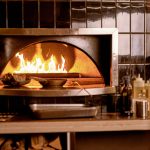The heart of every home, the kitchen, is where meals bringing families together are made. The core of the kitchen, the oven, plays an indispensable role in creating these meals. Today, many homeowners are opting for ovens with built-in steam functions. But what exactly are these appliances, and what considerations should you keep in mind when selecting one for your kitchen?
Understanding Ovens with Built-in Steam Function
Before diving into the key considerations for choosing these ovens, it is essential to understand what they are and how they differ from traditional ovens.
Also to discover : What are the best practices for maintaining a butcher block countertop?
Ovens with built-in steam functions, also known as steam ovens, are a revolutionary addition to the modern kitchen. Unlike conventional gas and electric ovens, steam ovens introduce steam into the cooking process. The steam is generated by heating water within the appliance, which is then released into the oven cavity. This method of cooking preserves nutrients in food and keeps it moist.
But, how does the steam function fit into your cooking routine and why should you consider it in the first place? Well, it’s about time we delve into the nitty-gritty of selecting the best oven with a steam function for your kitchen.
This might interest you : What are the best practices for maintaining a butcher block countertop?
Assessing the Cooking Capacity
One of the first things to consider when choosing an oven is its capacity. This factor will largely depend on your cooking habits, the size of your family, and the space available in your kitchen.
Ovens with built-in steam function come in a wide range of capacities, from compact models ideal for small families or studio apartments, to larger models that can cater to a big family or frequent entertaining.
It’s crucial to keep in mind your specific needs when selecting the capacity of your steam oven. For instance, if you often cook large roasts or bake in multiple trays, a larger capacity oven would be most suitable. On the other hand, if your cooking involves smaller portions or you’re working with limited kitchen space, smaller capacity models will be more fitting.
Evaluating the Cooking Modes
While the primary appeal of these ovens lies in their steam functionality, many models offer additional cooking modes. These can include traditional convection cooking, grill functions, and a combination of steam and convection cooking.
If you’re a versatile cook and venture into a variety of cooking styles, an oven with multiple modes would be ideal. This will provide you with the flexibility to switch between different cooking methods depending on the dish. For instance, the combination mode (steam and convection) is perfect for achieving a crispy exterior and juicy interior in your roast chicken or baking bread.
Delving into Cleaning and Maintenance
Just like any other kitchen appliance, your oven needs regular cleaning and maintenance. When it comes to steam ovens, some models feature automatic cleaning programs that use steam to loosen dirt and grime, making the cleaning process easier.
However, not all ovens with built-in steam function come with this feature. In such cases, you will have to manually clean the appliance. This may involve removing and washing the water reservoir and wiping down the oven interior. Therefore, it’s essential to consider how much time and effort you’re willing to spend on maintaining the oven, and choose a model that aligns with your preferences.
Checking Energy Consumption and Efficiency
In today’s world, energy efficiency is a top concern for many homeowners. When selecting a steam oven, it’s essential to consider its energy consumption.
Steam ovens, whether electric or gas, will generally use more energy than a conventional oven due to the additional power required to generate steam. However, some models are designed to be more energy-efficient than others.
Check the energy rating of the oven, as it will give you an idea of its energy consumption. Higher ratings typically mean less energy use, which is not only beneficial for the environment but can also contribute to lower energy bills in the long run.
In conclusion, choosing an oven with a built-in steam function involves careful consideration of various factors, including capacity, cooking modes, cleaning and maintenance, and energy efficiency. By taking these factors into account, you’re bound to find the perfect appliance to cater to your cooking needs and enhance your kitchen experience.
Deciphering the Types and Features
As you navigate through the selection of steam ovens, it’s crucial to understand the different types available, and the unique features each one offers. The three main types of steam ovens are pure steam, steam assist and combi steam ovens.
Pure steam ovens solely use steam to cook, making them perfect for individuals who regularly steam their food. They’re great for preserving the nutrients in the food, but they lack the ability to brown or crisp the food.
Steam assist ovens, also known as steam injection ovens, are essentially conventional ovens that have the option of adding steam to the cooking process. They’re perfect for baking bread or any other food that requires a moist environment.
Combi steam ovens, the most versatile of the three, combine the benefits of steam and convection cooking. They’re ideal for a wide range of cooking tasks, from baking to roasting to steaming, offering the most flexibility when it comes to cooking methods.
Features can vary significantly between models. Some steam ovens come with a removable water reservoir, while others might need to be plumbed directly into your water supply. A few models might feature a descaling program to maintain the appliance, while others may require manual descaling. Some might offer advanced features like a temperature probe for precise cooking or a delayed start function.
Whilst considering these distinctions, look out for models with stainless steel interiors, as they’re durable and easy to clean. If you frequently use larger baking trays or roasting pans, ensure the oven you select is wide enough, typically around 24 inches wide for built-in steam ovens.
Making Your Purchase Decision
Having considered all the factors above, you’re well-equipped to make an informed purchase decision. However, before you make your final choice, it’s wise to check the warranty of the oven.
Most manufacturers provide a warranty that covers any defects in materials or workmanship. However, the length and coverage of the warranty can vary between manufacturers and models. As such, it’s crucial to read the warranty terms carefully.
Don’t forget to take into account other factors such as after-sale services, availability of spare parts, and the reputation of the brand. If possible, visit a store to see and try out the oven in person before making your purchase. This gives you the opportunity to assess the look, feel, and operation of the oven, making sure it meets your needs and expectations.
Wrapping Up
In conclusion, selecting an oven with a built-in steam function involves considering a variety of factors. This includes understanding the different types of steam ovens and their unique features, deciding on the right capacity and cooking modes, considering the cleaning and maintenance requirements, checking the energy efficiency, and finally, inspecting the warranty and other factors related to the purchase.
Remember, your final choice should be one that best aligns with your cooking habits, kitchen space, and personal preferences. The right steam oven can revolutionize your cooking experience, enabling you to prepare meals that are not only delicious but also packed with nutrients. Happy cooking!











